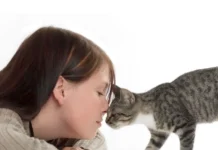Understanding Cat Trilling: A Unique Feline Vocalization
While this article discusses cat trilling, it’s worth noting that a more comprehensive guide was published in February 2024. For the latest insights, check out our definitive guide here: Decoding Cat Trilling: Understanding the Why, How, and When of Your Feline’s Melodic Communication.
What Is Cat Trilling and Its Meaning?
Trilling is one of the most expressive vocalizations made by cats, highlighting their ability to communicate not only with other felines but also with humans. This unique sound differs from standard meows and purrs, as it is produced with a closed mouth, creating a high-pitched tone reminiscent of the rolling Rs often heard in Spanish. Typically lasting only one or two seconds, trilling is characterized by positive emotions, making it a distinctive part of feline communication.
Reasons Why Your Cat May Trill
Cats may trill for several compelling reasons, all of which generally reflect their comfort and trust in their owners.
1. Trilling Between Mother and Kitten
Mother cats predominantly use trilling to communicate with their kittens, encouraging them to follow or capturing their attention. Kittens quickly learn this sound and often replicate it when interacting with other animals or humans, especially when seeking attention.
2. A Form of Greeting
For adult cats, trilling often serves as a warm greeting, expressing affection and happiness towards their owners or fellow felines. It’s not uncommon for cats to trill as a prompt for their owners to engage in petting or play.
3. Attention-Seeking Behavior
Cats may also use trilling to gain your attention. If your cat persistently trills, it may be inviting you to spend time with them or leading you to something of interest. According to Sara Nelms, a pet writer, consistent trilling paired with eye contact might indicate a desire for your engagement.
4. A Form of Communication
Often, trilling indicates positive emotions. Cats may utilize this sound to communicate with other cats or engage with their humans. Spending some time to “chat” back with your cat can foster a unique bond.
When Should You Be Concerned About Trilling?
Generally, trilling is a positive sign. However, if your cat suddenly increases its trilling frequency or seems distressed, it may warrant further investigation. Paul Martinez, a veterinarian, suggests that excessive trilling may indicate discomfort or health issues, necessitating a visit to the vet.
Why Doesn’t My Cat Trill?
Not all cats trill. Individual personality plays a significant role; more extroverted cats are likely to trill, while shy cats may struggle to express their emotions vocally. Additionally, certain cat breeds, such as Maine Coons, Siamese, and Scottish Folds, tend to be more talkative and prone to trilling.
Conclusion
Understanding cat communication is vital for strengthening your bond with your feline friend. Trilling signifies various emotions and serves as another avenue for your cat to express their needs. The next time your cat trills, take a moment to respond, and enjoy the playful exchange.
About the Author
This article was penned by Beatrix Potter, a dedicated pet writer for Essay Writing Service and Academized. With a passion for pet care and communication, she shares her insights derived from years of loving her two cats and providing thoughtful guidance on pet healthcare.












